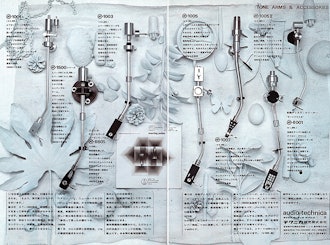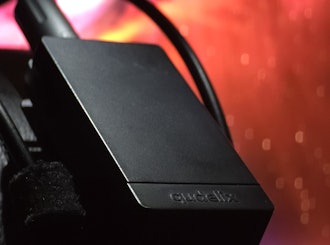Click to view our Accessibility Statement or contact us with accessibility-related questions
















I need a basic explanation for how headphones work.
I am a beginner to this. I have very little knowledge on drivers and headphones in general.
I just want someone to explain me the basic knowledge on how they work and sound stuff.
Some stuff I would want to know is something like frequency response and sound stage.

search
close
Sort by: Newest
keyboard_arrow_downbasisunus
5
Feb 26, 2019
Although electrical engineers can give very detailed descriptions about headphones/amps/signals, bioengineers have yet to figure out how ear and brain work, which I think is truly the most important part of the puzzle. I can give an example of how solid terms can become elusive without knowing the inner workings. Frequency sounds like an absolute term that people all understand. However, it usually assumes decomposing a signal using harmonics, or sine-cosine waves, or Fourier series. Using basis functions other than the Fourier series results a different frequency spectrum. For example, a sine wave of 1KHz has one peak of 1K on its spectrum using Fourier series, but has infinite bandwidth when using a square wave series for the decomposition. A square wave of 1KHz is said to be so because implicitly we use a square wave series to do the decomposition. Otherwise, it also has infinite bandwidth when Fourier series are used. One might say, Fourier series are used because that's the simple and natural form of physical vibrations. But who can be sure the ears and brains of humans are actually following the pattern?

eagelb
14
Feb 26, 2019
Bennosteve
13
Feb 24, 2019
headphones, like most other loudspeakers, use a coil of wire (wrapped around a permanent magnet) connected to a 'diaphragm' (like the cone of a speaker) which when wiggled pushes the air back and forth in time to the music. It wiggles due to the rising and falling magnetic field in the coil of wire which opposes the magnetic field of the permanent magnet (to push against). That's it in a nutshell.
Bennosteve
13
Feb 25, 2019
When stuff wiggles between 20 times per second up to 20,000 times per second, our ears perceive this as 'sound'. The number of times that something wiggles (in one second) is called 'frequency', The term 'frequency response' is an abbreviation of 'amplitude versus frequency response'. This is a measure of transfer function, or, how well a device (loudspeaker for instance) conveys all of the frequencies that are asked of it to reproduce. If the device is perfect, all frequencies are conveyed equally (equally in amplitude) from the lowest pitch we can hear (20Hertz) up to the highest (20,000Hertz). The amplitude, quantified by decibels, is then expressed as a plus or minus deviation from perfect reproduction (zero). Most specifications that you see conveniently omit this plus or minus figure, rendering the specification meaningless, by exaggerating the response to be perfect, which it isn't, ever. A real honest spec for a speaker might be, "55 to 18,000 + or - 3dB. This would be a VERY good speaker. Sound stage is not something I'm an expert at, but it is a very subjective description audiophiles like to use to try and make you believe that they can hear something that you cannot due to their 'golden' ears.
scruffy1
55
Feb 26, 2019
Bennostevesound stage is a term referring to the perceived separation of sound sources when listening - it's how the "performers" are spread out across your "stage", and it is quite easily appreciated if you listen to pink floyd wearing headphones, really
better equipment makes the illusion of live performance much more immersive
and yes, it's subjective, like all listening, because no-one else possesses your cochleas and auditory association areas
frequency is what bennosteve said ;)
Related Posts

storyboardtech
Finding your groove: getting into vinyl with Audio-Technica
I’d like to think that I could’ve been friends with the late Hideo Matsushita, founder of Japanese Hi-Fi powerhouse Audio-Technica. If I could, I’d travel back in time to 1960’s Tokyo, where a young Matsushita curated “vinyl listening sessions” at the Bridgestone Museum of Arts, exposing visitors to the sounds and possibilities of high end audio and the warmth of vinyl records. I imagine sitting with him in a mod coffee shop, listening to the stories of what he witnessed in those sessions, the conversations he had with visitors, and what ultimately motivated him to head back to his small apartment above a ramen restaurant and start an audio company of his own. In the histories I’ve read regarding AT’s humble beginnings, Matsushita’s motives seem clear. Produce high end audio at affordable prices, bringing audio excellence into spaces and to customers that simply didn’t have access to it before. His first two products, the AT-1 and AT-3 phono cartridges did exactly that, and...
Dec 6, 2023

harrykane01
World Of Shanik
The World of Shanik, known for its fusion of culinary excellence and elegant design, now offers a diverse range of products to enhance your lifestyle. From the exquisite turntable cheese board, perfect for entertaining guests with style, to the nightstand organizer wood, keeping your essentials neatly arranged, to the custom tequila shot glasses that add a personal touch to any gathering, Shanik continues to innovate in both form and function. Since its inception as a celebration of good food, good people, and sophisticated design, Shanik has evolved into a trusted destination for those who appreciate quality craftsmanship and tasteful living.
Apr 25, 2024

robbertwilson
Shop Premium Women Golf Shirts at ApparelnBags
Be the trendsetter on the golf course with our stylish collection of custom polo shirts for women. Whether you're swinging your way to victory or simply want to rock that sporty chic look, our polo shirts for women are here to make you stand out. Moreover, we understand that style and quality go hand in hand. That's why, from golf shirts for women to long sleeve polo shirts for women , we handpick the best products to ensure you experience comfort and durability. Also, our women polo shirts offer the perfect blend of style and functionality, so you can focus on your game without compromising style. So, grab your favorite polos today. Remember, it's not just a game; it's a lifestyle, and our polos will help you ace both!
Apr 25, 2024

MrChiSox
Big changes coming to my tiny little music room, I've recently purchased a new stack. Currently figuring out where to locate it all and ordering up the necessary cables, it won't be too long before I'm up and running. I am now the proud owner of a brand new stack. It's a European brand called Earmen. Amp, DAC, Streamer & Linear Power Supply. It won't be long!
https://www.youtube.com/watch?v=MB15yM4UptQ
Apr 23, 2024
Trending Posts in Audiophile

harrykane01
World Of Shanik
The World of Shanik, known for its fusion of culinary excellence and elegant design, now offers a diverse range of products to enhance your lifestyle. From the exquisite turntable cheese board, perfect for entertaining guests with style, to the nightstand organizer wood, keeping your essentials neatly arranged, to the custom tequila shot glasses that add a personal touch to any gathering, Shanik continues to innovate in both form and function. Since its inception as a celebration of good food, good people, and sophisticated design, Shanik has evolved into a trusted destination for those who appreciate quality craftsmanship and tasteful living.
Apr 25, 2024

robbertwilson
Shop Premium Women Golf Shirts at ApparelnBags
Be the trendsetter on the golf course with our stylish collection of custom polo shirts for women. Whether you're swinging your way to victory or simply want to rock that sporty chic look, our polo shirts for women are here to make you stand out. Moreover, we understand that style and quality go hand in hand. That's why, from golf shirts for women to long sleeve polo shirts for women , we handpick the best products to ensure you experience comfort and durability. Also, our women polo shirts offer the perfect blend of style and functionality, so you can focus on your game without compromising style. So, grab your favorite polos today. Remember, it's not just a game; it's a lifestyle, and our polos will help you ace both!
Apr 25, 2024

SsButerbal
Ringing in PC38X's
I recently got this headset, and wow is it good. My only issue is when certain people talk on discord, I can hear a really high pitched ringing. I fiddled with a bunch of settings, computer audio and discord, and nothing seems to solve the issue. It is primarily if not all in my right ear only. Is there something wrong with my headset, or was that ringing always there I can just hear it cause the headset is THAT good? I haven't had any issues with any other application, though I have yet to test if I can hear the ringing on a different version of discord, say on my xbox instead of my pc. Only other issue I've had is occasional static, but I can't tell if it's from the headset or the show/game/etc.
Apr 24, 2024
itsamepe
Sennheiser PC37X randomly goes bad after disconnecting the cable ?
Greetings, Yesterday I was using my headset like normal with my macbook, just listening to music and on a call with people like usual, and the headset was perfectly fine. The stock wire that came with the headset is extremely long and yesterday it annoyed me very much that it kept getting tangled with itself, so I decided to see if the cable is replaceable. I pulled out the cable from the headset and saw the adapter, and looked online for a replacement. Upon plugging it back in, the audio sounded extremely muffled and washed out. Im not sure what I did wrong to make it mess up like that as I've always taken good care of it, ive had it for about 2 years and its always just been chilling on my desk, but anywho I thought the cable just went bad and ordered a replacement. The replacement came, and the issue is still persistant, so I am not sure what the issue is I've tried multiple different headsets and the issue is not with the port, and I also tried it with my windows laptop and...
Apr 23, 2024

MrChiSox
Big changes coming to my tiny little music room, I've recently purchased a new stack. Currently figuring out where to locate it all and ordering up the necessary cables, it won't be too long before I'm up and running. I am now the proud owner of a brand new stack. It's a European brand called Earmen. Amp, DAC, Streamer & Linear Power Supply. It won't be long!
https://www.youtube.com/watch?v=MB15yM4UptQ
Apr 23, 2024

Briankan
Recommendation for my next headphone set? I have Koss 95x
Hey all, What would you recommend I get next and why? I have Koss ESP-95x electrostatic massdrop headphones. These are my first and only audiophile set. I love them. I think my only real requirements is $500 or less for the headphones and that they have a little more low end. I don’t need thump but these are really light on lows…but the experience is still awesome. Also any recommendations on an amp? I only have my electrostatic thingy. I am using the Topping D50 DAC. thx!!
Apr 22, 2024

Simthaniel
Rigs
Modded headphones with qudelix at the core
When I received the Qudelix 5K, I had already modified a pair of Superlux HD-681 headphones. I previously soldered my own balanced connections to the drivers, providing multiple ways to connect and...
Apr 14, 2024




